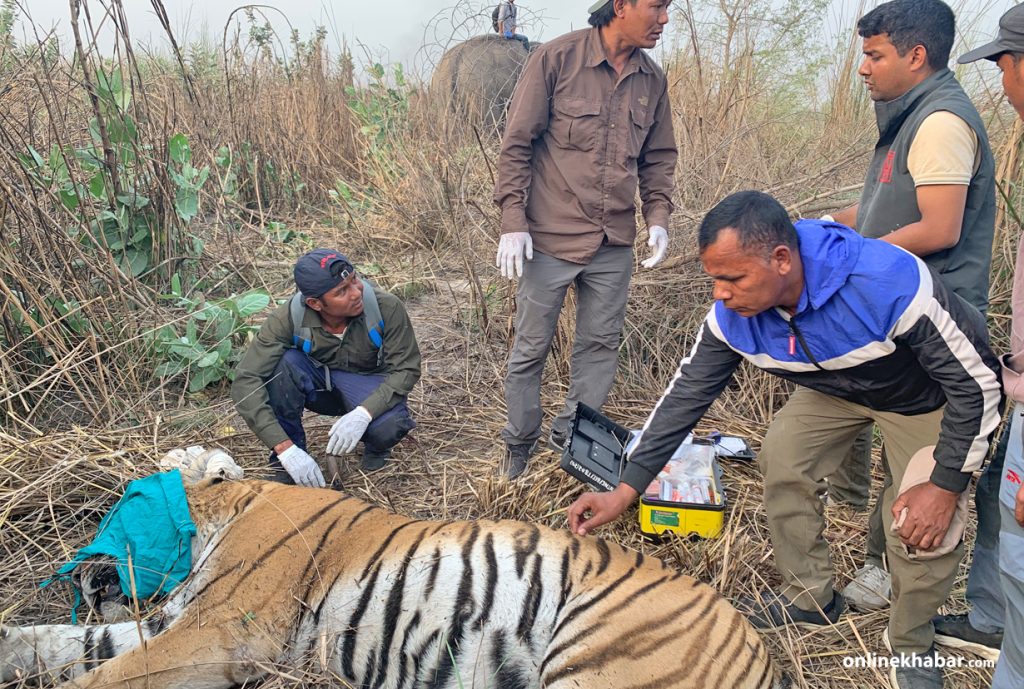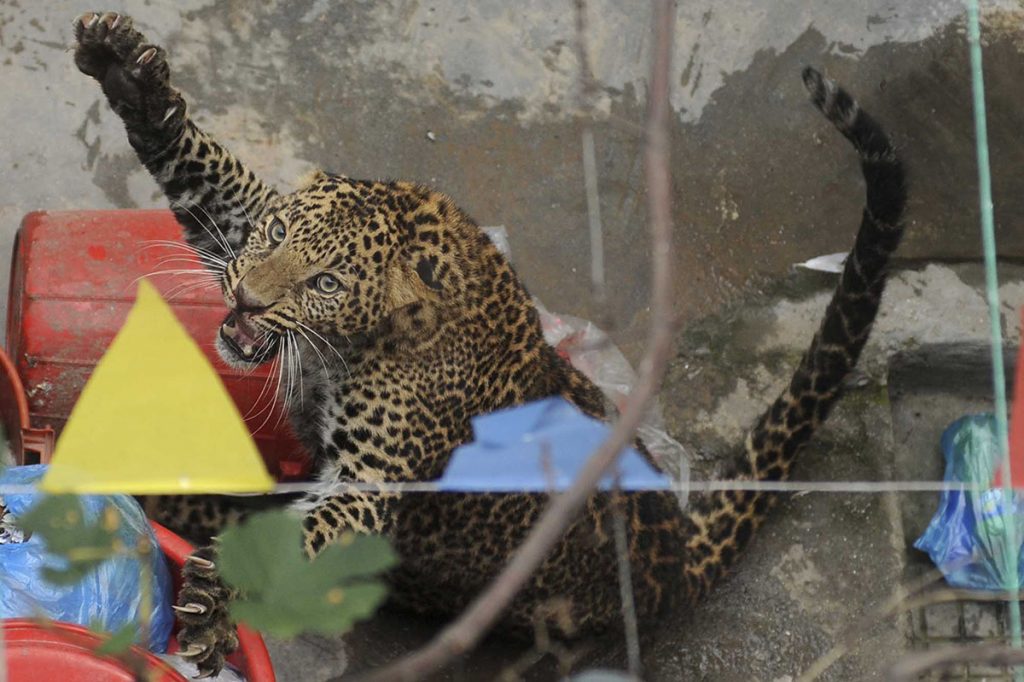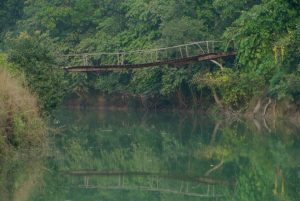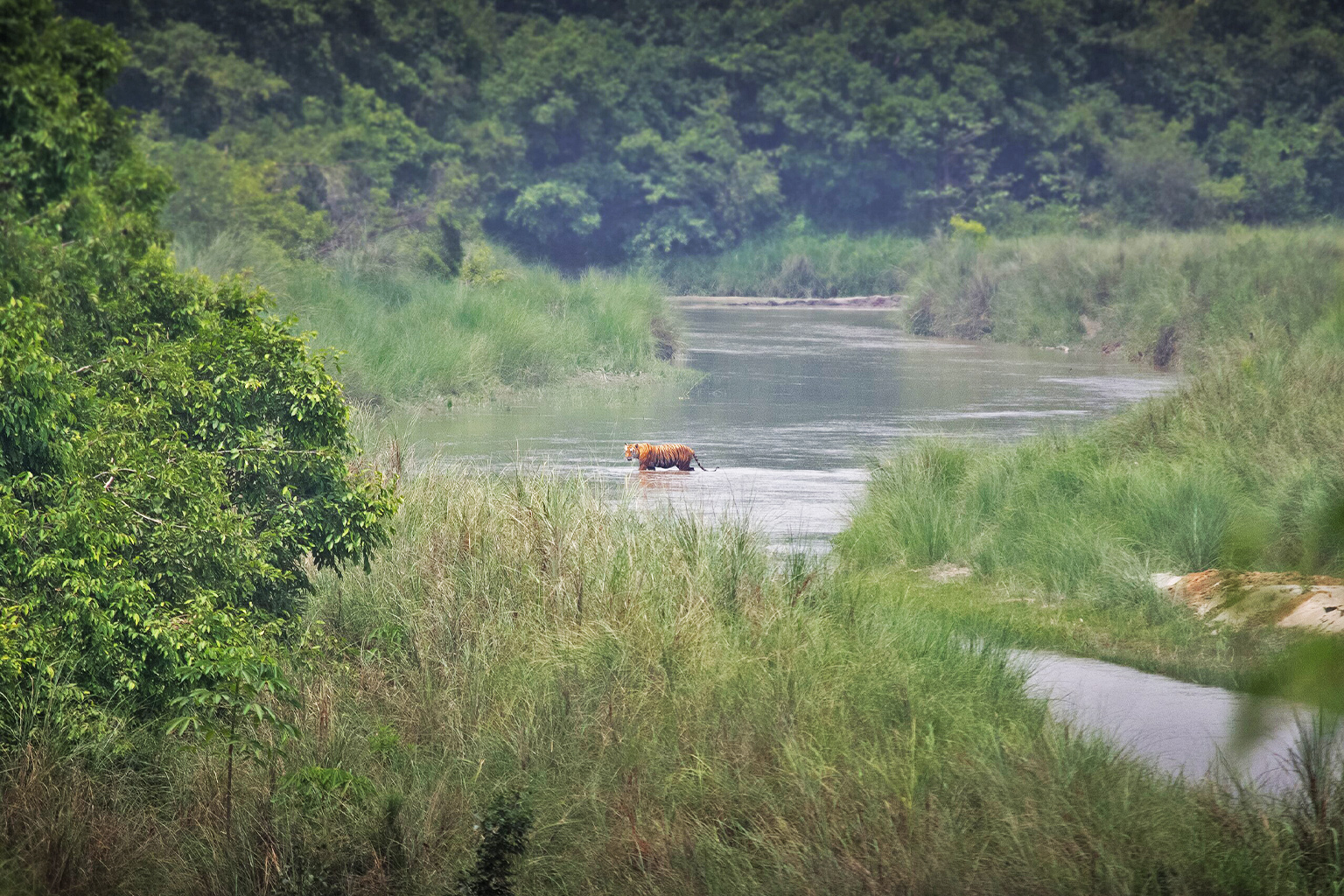
Shraddha Adhikari, a teacher, was sitting on the porch of her house in Devghat, in the Chitwan district of southern Nepal on a regular November evening when she saw a leopard suddenly come onto the road and snatch away a puppy that its owners were walking.
Two days before that, Adhikari had seen a CCTV video showing a leopard chasing away another dog from her neighbourhood.
“If you had heard about this incident from elsewhere, you could have felt sorry once and moved away,” Adhikari says, “But when it happens in front of your eyes, you unconsciously think otherwise.”
Adhikari, active in animal rights activism in the district, says that following the incident, she frequently asks what would have happened if there had been a child in the dog’s place.
Adhikari is aware that leopard attacks killed 11 children in four years in the neighbouring Tanahun district, and new incidents are being reported regularly.
“Hence, such incidents make you begin doubting if conserving predatory animals such as tigers and leopards is really important when you see incidents of human-wildlife conflict one after another,” Adhikari says.
The government records show that human-wildlife conflict has consistently been on the rise in the past few years. In the fiscal year 2018/19, the Department of National Parks and Wildlife Conservation reported 6,251 cases of wild animals causing a loss to humans—ranging from deaths and injuries to crop damage. In the following two years, the numbers were 8,164 and 8,455 respectively. Over these three years, the numbers of human deaths caused by wildlife attacks were 30, 33 and 40 respectively.
The department has not yet shared the data for the fiscal year 2021/22 which ended in mid-July 2022, but the number is expected to increase as human-wildlife conflict got media headlines more frequently that year.
Less frequently mentioned in headlines is the suffering of animals. According to the department’s annual report, in the fiscal year 2018/19, 376 protected animals died due to “other factors” besides natural deaths and poaching. The numbers of deaths due to “other factors” in the following years were 138 and 302 respectively. Some of those deaths may have been retaliatory killings; many are attributed to road accidents caused by faulty infrastructure.

Despite a part of her mind opposing the idea, Adhikari still believes wildlife conservation is essential and urges authorities to solve such issues so that local communities can participate in biodiversity conservation efforts. The authorities agree too as the department has identified human-wildlife conflict as one of its major challenges and hence has listed it as one of the top five priority areas in its new 2022-2030 strategy.
Human-wildlife conflict is also an important component of the Post-2020 Global Biodiversity Framework, currently being negotiated in Montreal, Canada at the 15th meeting of the Conference of Parties of the UN Convention on Biological Diversity (UNCBD), popularly known as biodiversity COP15.
The major mandate of the biodiversity COP15 is to adopt the Post-2020 Global Biodiversity Framework, a global plan for biodiversity conservation for up to 2030. The current draft of the document has provisions relating to managing human-wildlife conflict and promoting coexistence in its target 4.
Still, Adhikari does not have hope that authorities can allay her fears anytime soon.
Global concern

The World Wildlife Fund (WWF) has recognised human-wildlife conflict as a global concern, highlighting the need for concerted efforts to solve the problem. The conservation NGO highlights challenges posed by incidents of conflict to wildlife conservation in a 2021 report, “Of the more than 260 species of terrestrial vertebrates recorded to have had negative interactions with people, 53 have been declared as threatened. In addition, conflicts with marine species are increasing, though these interactions are comparatively understudied.”
According to an IUCN report published in June 2022, incidents of human-wildlife conflict are becoming more frequent, serious and widespread because of human population growth, agricultural expansion, infrastructure development, climate change and other drivers of habitat loss.
In Nepal also, the same factors are responsible for triggering human-wildlife conflict. For instance, a 2021 study reports 21.5 per cent of the elephant habitat of Nepal was lost between 1930 and 2020.
Such global concerns were reflected in a few events held during the ongoing biodiversity COP15 in Montreal. In a session hosted by International Institute for Environment and Development, the United Nations Development Programme, the Swedish International Development Cooperation Agency (Sida) and the World Economic Forum, the organisers as well as representatives of the corporate sector and indigenous peoples and local communities said well-designed biodiversity credit (biocredit) plans would be helpful to incentivise conservation efforts so that the impacts of human-wildlife conflict can be mitigated.

Unlike carbon or biodiversity offsets, which are payments made by a business to compensate for, or offset its damaging impacts on location-specific ecosystems, biodiversity credits allow companies to support nature-positive action, funding long-term conservation and restoration of nature.
According to a World Economic Forum publication, private sector dollars have gone to local groups and organisations involved in the conservation of vulnerable species in Colombia, New Zealand and Australia after calculating the amount they conserve. These economic instruments are still trial-and-error, but promoters are eager to scale them up.
Meanwhile, sustainable or wildlife-friendly infrastructure, a concept already introduced in Nepal, has also been proposed as another tool for reducing human-wildlife conflict.
Compensation is crucial

As debates over the framework grew more intense globally, conservationists in Nepal have begun calling for compensation for communities affected by human-wildlife conflict, not only from the government of Nepal but also from developed countries and other international organisations.
“Since wildlife is considered a global concern and it benefits all humanity, Nepali communities should be compensated for the loss caused by wildlife so that the resources can be used to benefit both humans and species to co-exist without any conflict,” says Kumar Paudel, a co-founder and director of Greenhood Nepal, a conservation non-profit.
“Irrespective of national boundaries, we have the responsibility to protect all species for posterity.”
Babu Ram Lamichhane, the chief of the Biodiversity Conservation Centre under the National Trust for Nature Conservation, which is involved in the management of protected areas in Nepal, says such a model might work, but at first, existing mechanisms should be implemented well.
Lamichhane says Nepal’s problem with addressing human-wildlife conflict is not about policies but procedures. “Sometimes, the people whose family members are killed in tiger attacks or whose crops were destroyed by elephants have to spend as long as six months or a year to get compensation from the government,” he says, “In such a case, people tend to think it’s better to stay silent than to claim compensation. It makes them hostile towards conservation in the long run.”

But, prevention is better than cure. Lamichhane says local communities likely to be involved in conflict with wildlife should have access to the benefits of conservation beforehand. “If you look at Chitwan, people in the eastern side (of the national park) do not report any conflict with rhinos or elephants because they have been benefitting from the tourism industry associated with it,” he says, “But, the more you go westwards (where tourism facilities are scarce so far), the communities look more hostile.”
In his view, human-wildlife conflict is emblematic of a lack of acceptance. “Rhinos coming out on the road or farm are accepted in eastern Chitwan but are retaliated against in the west.”
Yet, he says the safety of people and their properties should be a priority in the vicinity of protected areas, and for that, timely and adequate compensation is a must.
The government accepts not only the importance of compensation but also its inefficiency in its distribution. That is why the department, in its new strategy, has made a commitment to revising the existing compensation guideline, increasing the relief amount and simplifying the process.
As per current provisions, a family receives Rs 1 million (~USD 7,575) if a family member dies in a human-wildlife conflict. If injured, the government bears the cost of treatment at a government hospital or provides up to Rs 200,000 for treatment at a private hospital.
The department’s chief Maheshwar Dhakal says, “At the same time, we will focus on increasing ecotourism opportunities for the tiger [and other species] so communities see the benefit of conservation in advance.”
The saturation debate

Despite these measures, Shraddha Adhikari believes case-by-case compensation or the promotion of ecotourism cannot save her family (or puppies) from leopard attacks in the future as she believes these leopards, originally from the Chitwan National Park, migrated to surrounding community forests after the number of tigers increased in the park.
In July this year, Nepal announced an increase in the tiger population, now numbering 355, which is 105 more than its target (250). Chitwan recorded 128 tigers in the survey, the highest number among all protected areas of Nepal.
As Nepal had nearly tripled the 2009 tiger population (121) in 13 years while most countries failed to double their figures, the news spread gloriously to the world. But, along with it came stories of deaths of locals in the periphery of protected areas.
In April 2021, former wildlife official Krishna Prasad Acharya told Onlinekhabar that the government needed to fix a ceiling on the number of wildlife species a protected area can have – especially apex predators with a large territory. It is generally believed that a female tiger needs at least 20 square kilometres whereas the male counterpart needs 60 to 100 square kilometres. But, conservationists say an attempt to limit the wild cats is erroneous as they can roam across hundreds of miles.
Acharya today says he still believes that some protected areas in Nepal are saturated, that is, they might have already exceeded their capacity.
“You need to conduct a scientific study to generate disintegrated data,” he says, “If you find that some areas have more animals than the capacity, you need to relocate or remove them.”
In post-saturation situations, the solutions could range from wildlife diplomacy (gifting the wildlife to other countries) to regulated hunting, he suggests, adding if necessary, Nepal should also be ready to promote wildlife farming and trade if scientific studies prove the saturation. “I have seen meats of endangered animals sold in Namibia with CITES approval whereas Thai companies sell bags made of crocodile skins with similar certificates,” he says, “If they can, why can’t we?”
While a new law allowing wildlife farming has been controversial, Acharya also cautions a blanket approach does not work. “I am not saying you should farm tigers, but smaller mammals can be farmed,” he says, “Conservation is also about giving benefits to the people, and it should be ensured.”
The department chief Dhakal, however, says the time is not yet ripe to think of population control measures, hinting that the government would continue its focus on wildlife population growth for now.
“But, what’s the point in doubling or tripling the wildlife population if you can’t properly manage them,” questions Adhikari.
This story was produced as a part of the 2022 CBD COP15 Fellowship organised by Internews’ Earth Journalism Network.

























